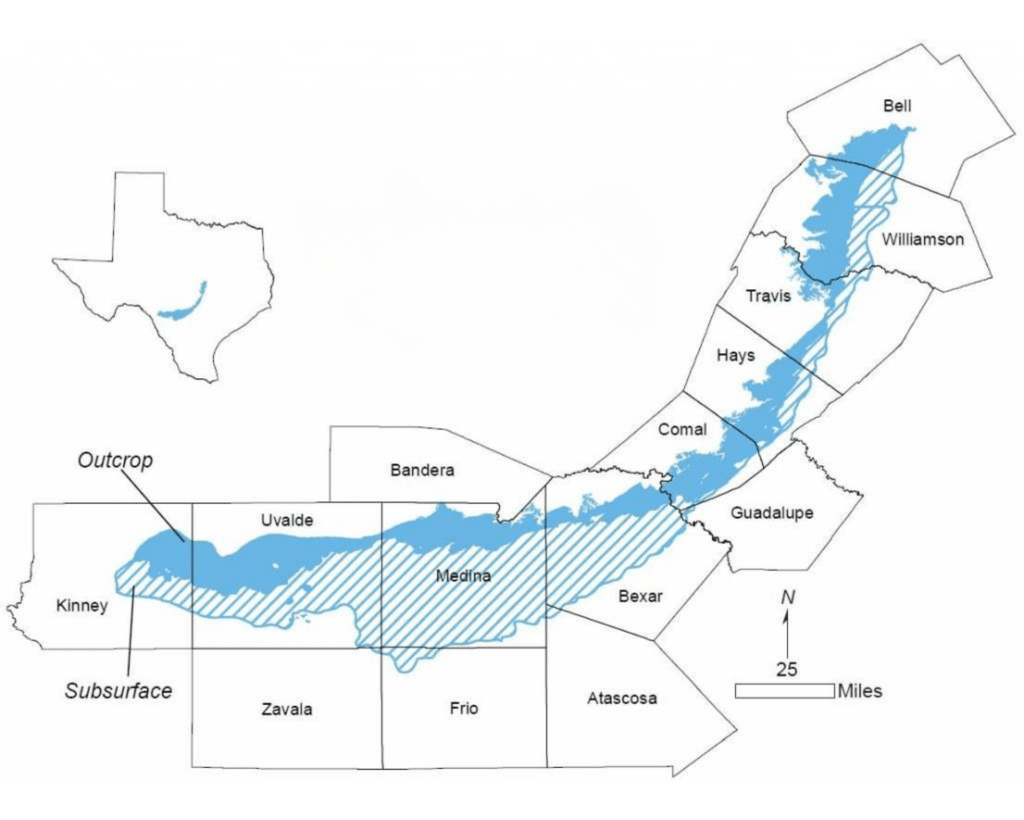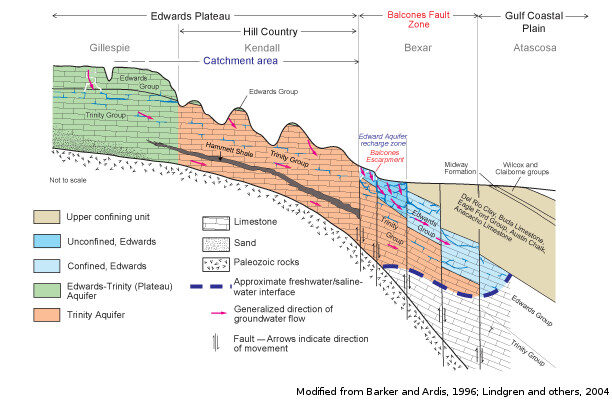The Edwards (Balcones Fault Zone) Aquifer is a major aquifer in the south-central part of the state. It consists primarily of partially dissolved limestone that creates a highly permeable aquifer.
Aquifer thickness ranges from 200 to 600 feet and freshwater saturated thickness averages 560 feet in the southern part of the aquifer.
The groundwater, although hard, is generally fresh and contains less than 500 milligrams per liter of total dissolved solids. Water from the aquifer is primarily used for municipal, irrigation, and recreational purposes.
San Antonio obtains almost all of its water supply from the Edwards Aquifer. The aquifer feeds several well-known springs, including Comal Springs in Comal County, which is the largest spring in the state, and San Marcos Springs in Hays County, which is the second largest. Hueco, San Pedro, San Antonio, and Leona springs also discharge from the aquifer.
Because of the aquifer’s highly permeable nature, water levels and spring flows respond quickly to rainfall, drought, and pumping. Although water levels periodically and seasonally decline rapidly in wells throughout the aquifer, they also rebound quickly with adequate rainfall.
The regional water planning groups, in their 2006 Regional Water Plans, recommended several water management strategies that use the Edwards Aquifer, including drilling new wells, constructing small dams along streambeds to enhance recharge to the aquifer, and reallocating supplies from irrigation to municipal users. They also recommended expanding an existing aquifer storage and recovery facility that stores water from the Edwards Aquifer in the Carrizo-Wilcox Aquifer in southern Bexar County.
The Edwards Aquifer is contained within the Cretaceous-age Edwards Group limestone (Edwards Limestone) and associated units.
Edwards Aquifer Studies
Below are some studies the District has funded to better understand our aquifers.


